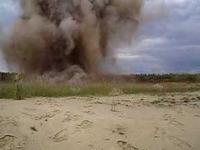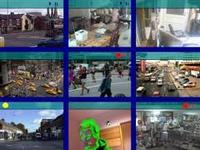-
Senate panel’s report harshly criticizes role, utility of DHS fusion centers
A 2-year bipartisan investigation by the U. S. Senate Permanent Subcommittee on Investigations has found that DHS efforts to engage state and local intelligence “fusion centers” has not yielded significant useful information to support federal counterterrorism intelligence efforts; the report says that senior DHS officials were aware of the problems hampering effective counterterrorism work with the fusion centers, but did not always inform Congress of the issues, nor ensure the problems were fixed in a timely manner; DHS estimates that it has spent somewhere between $289 million and $1.4 billion in public funds to support state and local fusion centers since 2003 (the report says that these are broad estimates which differ by over $1 billion); the Senate investigation raises questions about the value this amount of funding and the contribution the fusion centers make to the U.S. counterterrorism efforts; not everyone agrees with the report; Rep. Peter King (R-NY), chairman of the House Committee on Homeland Security, said: “I agree with Chairman Joe Lieberman and Ranking Member Susan Collins [of the Senate Committee on Homeland Security] that the subcommittee report issued this week paints with too broad a brush an incomplete picture that fails to recognize many of the important contributions that fusion centers have made in securing our Homeland”
-
-
Law enforcement can store, identify millions of voice samples using new software

Everyone this day can be identified by a fingerprint, DNA, or even a picture. Now, with the help of a Russian company, the FBI will soon be using voice recognition to identify people; the FBI says voice biometrics will be a “reliable and consistent means of identification for use in remote recognition”
-
-
Why common explosive sometimes fails

The explosive PETN has been around for a century and is used by everyone from miners to the military, but it took new research by Sandia National Laboratories to begin to discover key mechanisms behind what causes it to fail at small scales
-
-
LAPD wants to know why you are taking these photos
If you live in Los Angeles and decide to take some pictures of a few monuments or public places to send to friends and family or for your own private collection, the Los Angeles Police Department (LAPD) may see you as a potential threat to public safety
-
-
German police wants to develop its own computer surveillance software
The Federal Police Office of Germany (also known as the BKA) is looking to hire software engineers who can develop computer surveillance technology for use by law enforcement and intelligence agencies in criminal investigations
-
-
Tasered youth fare as well as adults: study

Adolescents who are tasered by law enforcement officers do not appear to be at higher risk for serious injury than adults, according to new a new study; the conclusions are based on a retrospective study of Taser use from law enforcement data collected by the largest, independent multicenter database established in 2005
-
-
Sharp drop in illegal crossers notwithstanding, “border industrial complex” keeps growing
Since 1986, U.S. immigration enforcement has cost the U.S. government $219 billion dollars; almost 80,000 workers now depend on immigration enforcement for their employment; illegal immigration has dropped sharply over the last four years, and is now at a 1971 level — but the what some call the “border industrial complex” keeps growing and growing
-
-
DARPA’s legged robot beats Usain Bolt’s speed record

Usain Bolt, Olympic gold medalist and world record-holder sprinter, set the world speed record for a human in 2009 when he reached a peak speed of 27.78 mph for a 20-meter split during the 100-meter sprint; DARPA’s Cheetah robot, already the fastest legged robot in history, bested Bolt recently by clocking at 28.3 mph for a 20-meter split
-
-
Radiation-enabled computer chips allow low-cost security imaging systems
With homeland security on high alert, screening systems to search for concealed weapons are crucial pieces of equipment; these systems, however, are often prohibitively expensive, putting them out of reach for public spaces such as train and bus stations, stadiums, or malls, where they could be beneficial; until now
-
-
Forensic science in the dock
Two members of O. J. Simpson’s defense team founded the Innocence Project in 1992; since then, the project has helped exonerate almost 300 innocent people by challenging improper use of DNA testing and other elements of forensic science
-
-
Law-enforcement agencies eager for Web-surveillance tools

Private technology firms are pitching software capable of analyzing large swaths of the Internet to local law enforcement looking for ways to stop the next mass shooting or domestic terrorist event before it happens; police departments hope the software will help them detect online information from terrorists, traffickers, pedophiles, and rioters
-
-
As shoe-scanning devices fail, passengers continue to remove their shoes

In the last five years the U.S. government has tested several scanning devices for detecting explosives and other weapons concealed in the shoes of airline passengers; after spending millions of dollars on these devices, TSA has concluded that the detection systems are ineffective; the result: removing shoes at security check points is going to be a part of air travel for the foreseeable future
-
-
The costs, benefits, and efficiency of aviation security measures
The threat of terrorist attack on American aviation has made the system the focus of intense security efforts, but it is difficult to determine if the benefits outweigh their cost; efficient security policy — a focus on getting the most security for the least cost — should be the priority in an era of fiscal austerity, says a new RAND report
-
-
Near-instantaneous DNA analysis
Polymerase chain reaction (PCR) is an indispensible technique allowing researchers and clinicians to produce millions of copies from a single piece of DNA or RNA for use in genome sequencing, gene analysis, inheritable disease diagnosis, paternity testing, forensic identification, and the detection of infectious diseases; PCR for point-of-care, emergency-response, or widespread monitoring applications needs to be very fast — on the order of a few minutes; this has now been achieved
-
-
Alcatel-Lucent offers first-responders access to multiple video feeds using 4G LTE
New first responder video solution provides mission-critical information on handheld devices to fire, police, and ambulance services to improve responsiveness, safety, teamwork, and cost efficiency; the First Responder Video solves the network congestion problem by optimizing bandwidth use and integrating multiple video feeds and other operational data into one single stream
-
- All
- Regional
- Water
- Biometrics
- Borders/Immig
- Business
- Cybersecurity
- Detection
- Disasters
- Government
- Infrastructure
- International
- Public health
- Public Safety
- Communication interoperabillity
- Emergency services
- Emergency medical services
- Fire
- First response
- IEDs
- Law Enforcement
- Law Enforcement Technology
- Military technology
- Nonlethal weapons
- Nuclear weapons
- Personal protection equipment
- Police
- Notification /alert systems
- Situational awareness
- Weapons systems
- Sci-Tech
- Sector Reports
- Surveillance
- Transportation
Advertising & Marketing: advertise@newswirepubs.com
Editorial: editor@newswirepubs.com
General: info@newswirepubs.com
2010-2011 © News Wire Publications, LLC News Wire Publications, LLC
220 Old Country Road | Suite 200 | Mineola | New York | 11501
Permissions and Policies
Editorial: editor@newswirepubs.com
General: info@newswirepubs.com
2010-2011 © News Wire Publications, LLC News Wire Publications, LLC
220 Old Country Road | Suite 200 | Mineola | New York | 11501
Permissions and Policies
